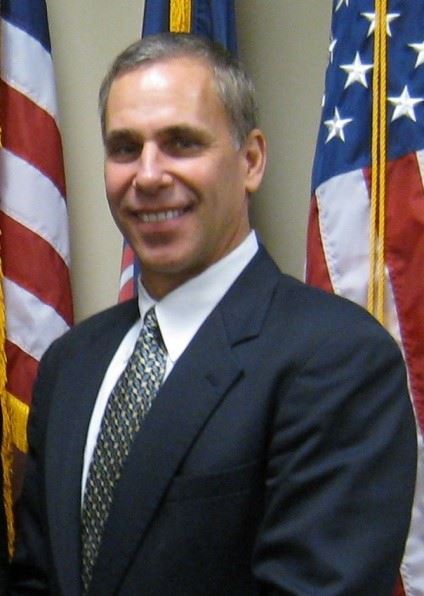2nd Vice President, CIT International Board of Directors
1. You serve in both a leadership role and as an instructor assisting jurisdictions in developing crisis intervention team programming and providing crisis de-escalation training for law enforcement officers. What advice can you offer to communities taking the first steps in strengthening the local behavioral health crisis care continuum?
The first place to start is to develop partnerships with all resources, services, and community stakeholders to form a dedicated steering committee. The steering committee then needs to identify common philosophies that will guide the development, rearrangement, or expansion of the community’s crisis response system. When I speak with communities interested in effective crisis response system development, enhancement, or evaluation, I start with the following five questions to help unify the committee around overarching principles:
- Does or will the system reduce stigma and promote acceptance that a crisis is a health issue?
- Does or will the system reduce penetration into the criminal justice system?
- Does or will the system allow and promote access to crisis services without law enforcement contact?
- Does or will the system include possible outreach and follow up by behavioral health resources that are independent of law enforcement?
- Does or will the system create a supported pathway to recovery?
Too often the primary responsibility for crisis response is left with law enforcement services. There is an essential role for law enforcement in a crisis response system, but it should be a supportive role. Behavioral healthcare services need to take the primary role and be able to address the crisis needs of the community without relying on law enforcement involvement unless safety or criminal concerns warrant it.
2. What is the most remarkable outcome you have heard about from the numerous Crisis Intervention Team (CIT) trainings you have conducted?
I had an officer who attended a weeklong CIT Utah training that ended on a Friday. He had to report for work that evening as a patrol officer. One of the first calls of his shift that evening mirrored a practice scenario he participated in the day before. It was a response to a call of a suicidal female, locked in a bathroom, who was armed with a knife. He located the female as she was standing in a tub with a knife in hand. This officer was able to utilize the philosophies, techniques, and tactics that were discussed that week to verbally engage the female for a period of time and resolve the situation safely and with voluntary compliance so that she could receive the assistance she needed. Later, that officer sent me an email attributing the way he handled the situation to his CIT training.
3. You dedicated much of your career to CIT. What personal or professional experiences motivate you in the work you do?
Through my work with CIT, including that of a CIT Investigator where I was responsible for follow-up on all cases involving mental health issues, I have been witness to numerous success stories. I have seen people who struggled with their illness, who were constantly involved in the criminal justice system, and who were in and out of hospitals finally find recovery. Several became strong advocates for access to services and support for others who struggle with their illness. A few became instructors in our trainings and speakers at our events. It is these individuals who continue to ignite my passion for developing access to behavioral healthcare services that minimize or eliminate criminal justice involvement as much as possible.
4. CIT has expanded over the years from training to “not just training,” where communities are encouraged to increase the resources and support that enable officers to divert people with mental and substance use disorders. As communities work on this, what do you think will be the next step for CIT? Or, what do you think CIT will look like in 20 years?
This actually is a misunderstanding of CIT programs. It never was just training. If we look at the Crisis Intervention Team Core Elements, which is a document describing the original philosophies of the first CIT program in Memphis, Tennessee, it states, “CIT is a program that provides the foundation necessary to promote community and statewide solutions to assist individuals with mental illness.”
CIT has always been about developing partnerships to create services to reduce criminal justice involvement due to mental illness. The original program developed an Emergency Mental Health Receiving Facility and credited it as a critical aspect that provided a source of emergency entry into the mental health system. Again, much more than just training. Looking at the crisis response system as a whole and finding the gaps is what I have seen become more of a central focus point for CIT programs. Mapping out crisis response systems to identify the need of dedicated crisis lines, mobile crisis outreach teams made up of clinicians with a certified peer specialist that are capable of responding independently of law enforcement services when the level of danger allows, and dedicated receiving centers is really where CIT is leading.
Of course, providing various types of training specific to the individual law enforcement officer’s role will always be a responsibility of any CIT program. We will always need to develop a cadre of specialists within patrol who fully understand the crisis response system. We will always need that specialist who can competently speak about behavioral health issues with those experiencing a crisis, family members of those individuals, as well as clinicians as they attempt to secure help for the person. We also need to be certain that every officer has a baseline level of training that will allow them to identify behavioral health issues and de-escalate emotionally escalated situations until specialists can respond.
Hopefully, within 20 years, we will see a behavioral healthcare system that is fully accessible to all. A system that is responsive to the individual needs of the person, is not stigmatizing, does not add to a person’s trauma history, and always provides a continuously supported pathway to recovery.
5. In addition to your work with CIT, you continue your work in law enforcement as a volunteer reserve patrol officer after retiring from full-time service. What keeps you working in the field?
When I made the decision to retire from full-time service, I still wanted to work with the community in a patrol capacity as I still maintain that as a passion. In addition, it allows me to practice my de-escalation skills and learn new ones that I can share with fellow officers as I teach around the country. And finally, it allows me to monitor my community’s crisis response system to see what is working, what is not, and to hopefully provide continued encouragement of improvement.


